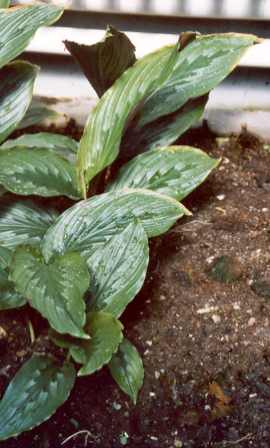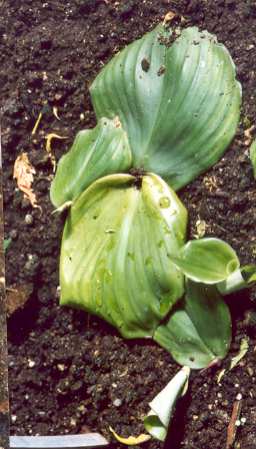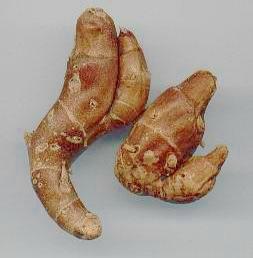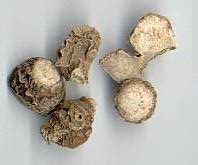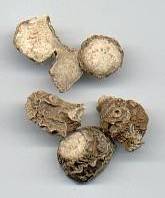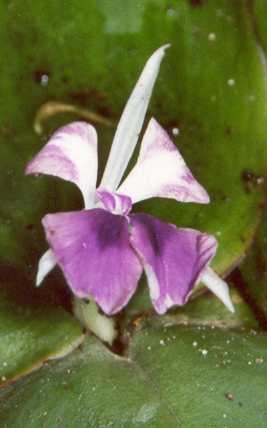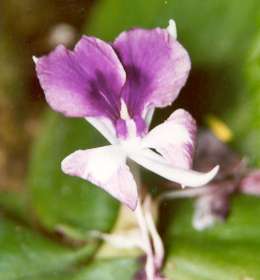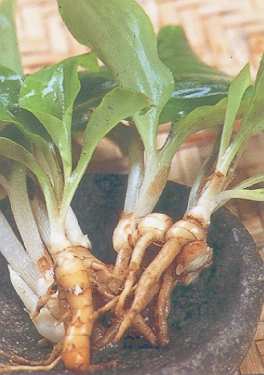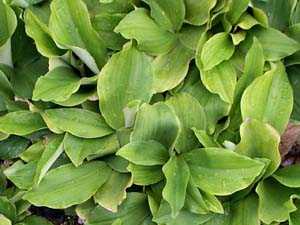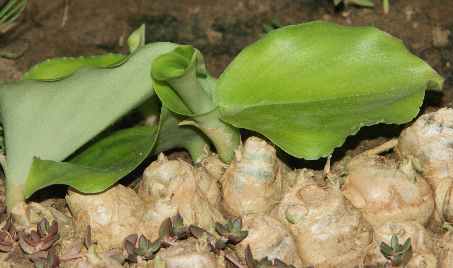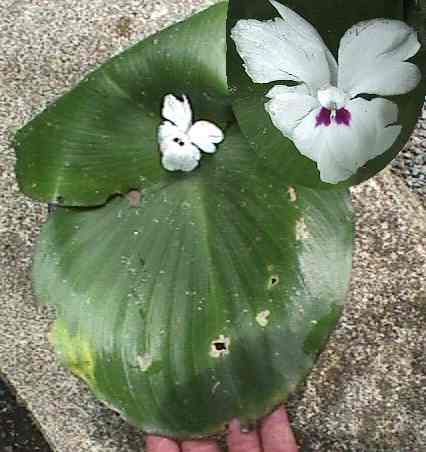
|
|
Lesser galanga, plant and flower
www4.ncsu.edu © Alan Galloway |
Slices of the dried rhizome may be cooked with vegetable or meat dishes, but mostly the spice is used fresh and grated or crushed. It is essential for Jawanese cooking (Rijstafel) and often appears in the characteristically spicy–sweet foods of that island. For example, lesser galangale often flavours the peanut sauce (sambal kacang) made from ground peanuts, sweet soy sauce (kecap manis), raw spices (chiles, garlic and lesser galangale) and tamarind water or lime juice. Sambal kacang is typically served to sate, grilled meat on tiny skewers, but also goes well with boiled or steamed vegetables.
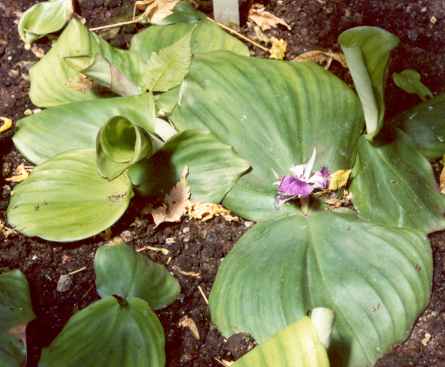
|
| Group of flowering lesser galangale plants |
Even more than in Jawa, lesser galangale is much loved in the neighbouring
island Bali (see Indonesian bay-leaf).
The most famous dish owing its character in part to lesser galangale is
Balinese roast duck bebek betulu, a favourite with tourists in
Bali. A whole duck is rub inside and outside with a paste (Balinese
jangkap, in Indonesian called bumbu, see lemon grass) made from onions, ginger, lemon grass, garlic,
kemiri nuts,
chiles, other spices and lesser galangale; after
wrapping in banana leaves, the duck is first steamed and then roasted in an oven
which makes the meat extraordinarily tender. The result certainly justifies the
effort.
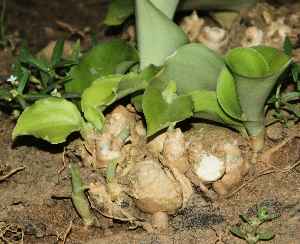
|
| Lesser galanga sproutig from rhizome |
In other parts of South East and South Asia, lesser galangale is not much known as a spice,
though it is widely cultivated as a medicinal herb. In dried form, it is a minor spice in Sri Lanka and
sometimes appears in aromatic spice blends together with cinnamon, cloves,
cardamom, mace and black pepper
(Sri Lankan cookboks in English usually refer to this ingredient as aromatic ginger
).
Its dominant use, however, is for dahat sarakku [දැහැත් සරක්කු],
a spice mix used for flavouring betel bits.
Dried lesser galanga has some culinary usage in China, being an optional ingredient to the
five spice powder (see star anise) and enjoying some
popularity for flavouring broths. It is particularly common in the cooking of the Sichuan province.
Contrasting the usage in tropical South East Asia, lesser galangale is
always used dried in Chinese cooking. Chinese cookbooks often refer to it
as sand ginger
, translated from Chinese sha jiang [沙姜].
See black cardamom for other dried spices used in
Sichuan stews, and see cassia on Chinese
master sauce.
The fingerroot, another spice from the ginger family, is very frequently confused with lesser galangale. This spice consists of finger-like tubers sprouting from a lumpy central part and is therefore easily recognizable; its taste, however, resembles lesser galanga. Its main use is for fish curries (see coconut) in Thailand. Nice pictures of both rhizomes are shown by Norman.
Another plant from the ginger family is zedoary,
also called white turmeric. Although aromatic, it is, however, less
important as a spice because of its rather strongly bitter taste.
